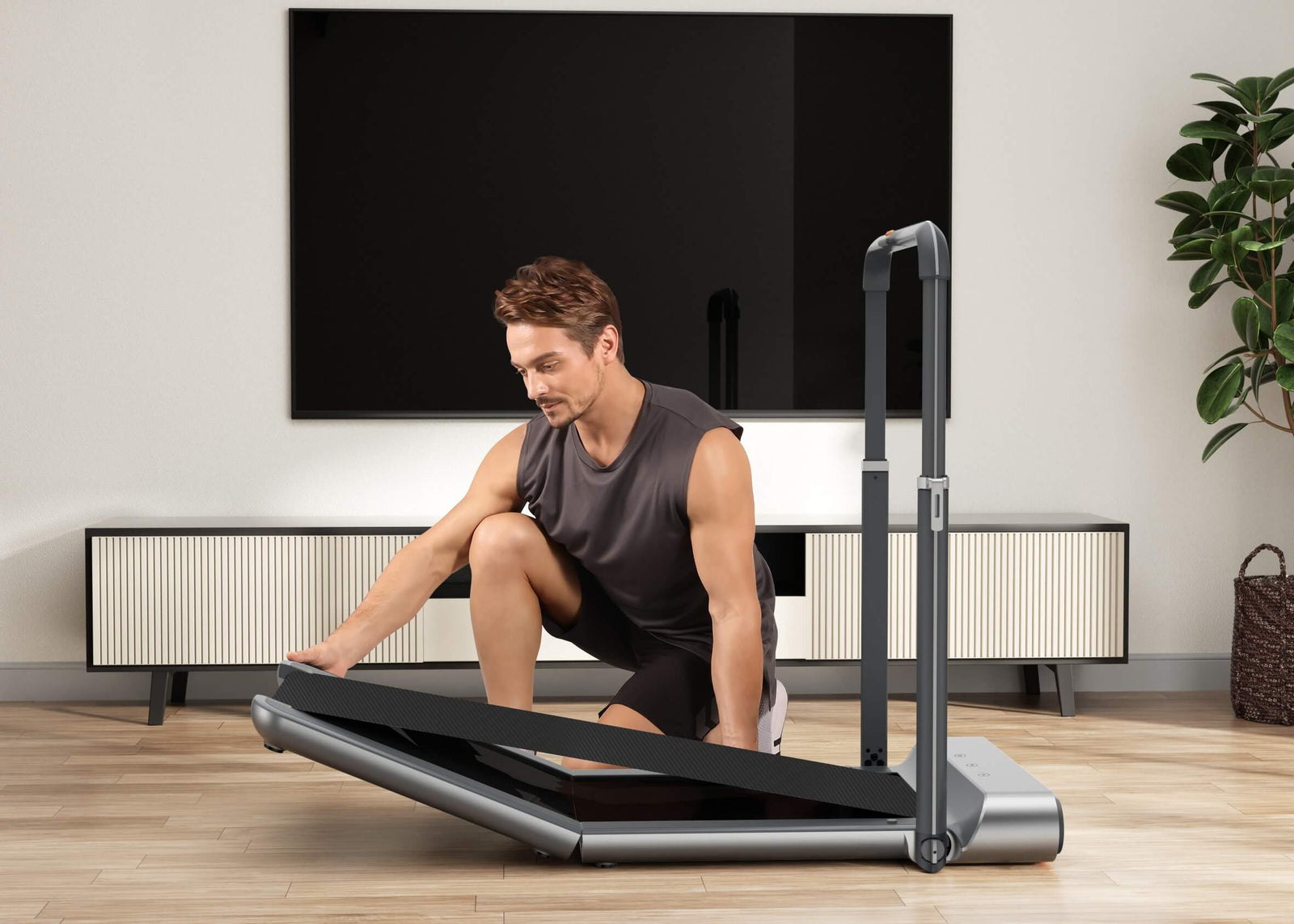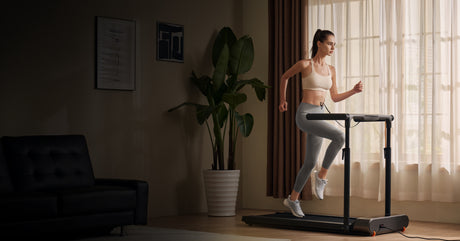Walking into your local UK gym and stepping onto the treadmill, you might suddenly notice your pulse racing faster than expected. A glance at the screen shows a number that feels higher than it should be, leaving you wondering whether something is wrong. It’s a surprisingly common experience that can catch even seasoned runners off guard, raising the question: Why does treadmill running make my heart rate spike?
The answer lies in a mix of factors. The treadmill’s steady pace often forces you to maintain an intensity you wouldn’t naturally sustain outdoors. At the same time, settings like incline or speed can push your cardiovascular system harder without you realizing. Environmental details, such as warm gym air or a lack of cooling breeze, also play a part. By understanding how these elements influence your heart rate, you can train smarter, avoid unnecessary worry, and make each session both safe and effective.
What Counts as a “High” Heart Rate?
It’s important not to jump to conclusions when you see a big number on the treadmill screen. Your pulse will always climb during exercise; that’s how your body delivers oxygen to your muscles. The key is knowing what range is normal and what might be pushing things too far.
Maximum Heart Rate (MHR): A simple formula is 220 minus your age. If you’re 40, your estimated MHR would be around 180 beats per minute (bpm).
Target Heart Rate (THR) Zone: This is the safe range to aim for during your workouts.
-
Moderate Intensity: 50% to 70% of MHR.
-
Vigorous Intensity: 70% to 85% of MHR.
If your heart rate keeps climbing above 85% of your MHR for long stretches, particularly if you feel dizzy, overly fatigued, or short of breath, that’s considered “too high.” Whether it shows up on the treadmill console or your smartwatch buzzes a warning, it’s a signal to slow down and reassess your effort.
Is It Normal for Heart Rate to Be Higher on a Treadmill?
Plenty of people notice their heart rate runs higher indoors than out, and in most situations, that’s nothing unusual.
The Treadmill Factor: Running on a treadmill is very different from heading out through your local streets, countryside lanes, or coastal paths. Outdoors, natural elements such as uneven ground, wind resistance, and changes in gradient create small fluctuations that give your body moments to recover. The treadmill, on the other hand, locks you into a consistent speed and surface, leaving no room for these micro-breaks. This constant demand can elevate cardiovascular effort, making your heart rate climb more quickly. Posture and form matter as well. If you grip the handrails, lean slightly forward, or fail to engage your core properly, your body may be working harder than you realize, further increasing your heart rate. Even the warmer, less ventilated air in many gyms compared to the cool outdoors can play a role in raising your numbers.
Understanding this distinction helps put things into perspective. If you’re working at a strong pace in the gym and your heart rate reads a little higher than expected, it’s generally a normal reflection of steady, continuous effort rather than a red flag.

Common Reasons Your Heart Rate Spikes
If you see your heart rate shoot above your target zone on the treadmill, don’t panic. More often than not, the cause is simple and manageable.
Dehydration
Even mild dehydration reduces blood volume, making your heart pump harder to deliver oxygen. A quick glass of water before you lace up can do more for performance than you’d expect; tea or coffee after your run can wait.
Lack of Sleep or General Fatigue
Starting a session after a restless night means your body is already playing catch-up. Muscles tire more easily, recovery is slower, and your heart compensates by working harder than usual.
High Intensity
It’s easy to underestimate how demanding a treadmill incline or higher speed can be. Even a slight increase in gradient requires more oxygen, and your cardiovascular system responds by spiking your heart rate.
Caffeine or Stimulants
That pre-run espresso sharpens focus but also raises your resting heart rate before you even step on the belt. Combined with vigorous activity, this can push your numbers higher than expected.
Environmental Temperature
A warm, crowded fitness studio can feel stifling compared to an outdoor jog in cool British air. Your body diverts blood flow to help regulate temperature, which leaves your heart working overtime to meet both cooling and exercise demands.
If you want to dig deeper into what’s really happening, a dedicated heart rate monitor offers far more accuracy than a treadmill display alone. Real-time data helps you spot the difference between a normal fluctuation and a sign that you’re genuinely overexerting.

When to Pay Attention and Talk to a Doctor
For most people, a higher heart rate on the treadmill simply reflects a tough workout, but certain warning signs should never be ignored.
Watch out for red flags such as:
-
Chest Pain or Pressure: Any tightness or discomfort in the chest is a signal to stop immediately and seek urgent medical care.
-
Severe Dizziness or Lightheadedness: Feeling faint or on the verge of passing out is a sign your body is under too much strain.
-
Irregular Rhythm: If your heartbeat feels erratic, fluttering, or like it’s skipping beats, this is more than just exertion.
-
Prolonged Elevation: If your heart rate stays unusually high well after your cool-down, it’s worth getting checked.
If you already have a history of heart problems, or if these symptoms appear even at a moderate pace, arrange an appointment with your GP. This is particularly important if you’re over 45 and starting a new fitness routine, as professional guidance can help you exercise safely while still progressing toward your goals.
How to Lower Your Heart Rate Safely During a Treadmill Workout
If you notice your heart rate rising higher than feels comfortable, there are practical steps you can take to bring it back into a safe range without derailing your session.
Reduce Speed or Incline
The quickest fix is to ease off the effort. Drop your pace or reduce the incline setting straight away. Even shifting from a jog to a brisk walk can help your heart rate settle back into a manageable zone.
Focus on Breathing
Controlled breathing can make a big difference. Try slow, deep breaths, inhale through your nose for a steady count of three, then exhale through your mouth for the same count. This activates your parasympathetic nervous system, signaling your body to relax.
Stay Hydrated
Take regular, small sips of water during your workout. Even mild dehydration reduces blood volume, forcing your heart to beat faster to maintain circulation. Keeping fluids topped up eases this strain.
Incorporate Cool-Downs
Avoid stopping suddenly at high speed. Always finish with a gradual cool-down, ideally five to ten minutes of walking, to give your heart rate time to lower safely.
Finally, remember that consistency is key. As your cardiovascular fitness improves, your heart becomes more efficient, able to pump more blood with each beat. Over time, this means you can work at higher intensities without your heart rate spiking as quickly.

FAQ
How do I calculate my personal Target Heart Rate (THR) zone?
Start with the simple formula: 220 – your age = your Maximum Heart Rate (MHR). From there, work out your training zones. Multiply your MHR by 0.6 to find the lower end of your moderate intensity zone, and by 0.85 to find the upper limit of your vigorous zone. For example, if you’re 40, your estimated MHR is 180 bpm, giving you a THR range of roughly 108-153 bpm.
Why does my heart rate spike at the start of my run?
It’s common for your heart rate to jump early in a workout, a response sometimes called cardiac drift. At the beginning of exercise, your body rapidly increases circulation to deliver oxygen and energy to working muscles, which causes a sharp rise. This initial spike usually evens out once you find a steady pace. A short warm-up, such as a 5-minute brisk walk or light jog, helps your heart adjust more gradually and reduces the sudden jump.
Does wearing a heart rate monitor make a difference?
Yes. While wrist-based fitness trackers are convenient, they can be inconsistent, particularly during high-intensity treadmill sessions when arm movement can throw off the reading. A chest strap monitor measures electrical signals directly from your heart, providing far more accurate data. This precision ensures you know exactly when you’re in your target zone, so you can push safely without relying on guesswork.
Conclusion
Experiencing a high heart rate on the treadmill is often part of a healthy training response, not necessarily a cause for concern. The key is knowing your Target Heart Rate zone, staying alert to factors such as dehydration, fatigue, or caffeine, and recognizing when to ease off. Whether you’re jogging steadily at home or pushing for a faster pace in a Manchester gym, your heart is adapting to the effort. With the right awareness, pacing, and accurate monitoring tools, you can make each treadmill session not just safe but also a meaningful step towards long-term cardiovascular fitness.
More Reading: How Long to Walk 20K Steps on a Treadmill? A Complete Guide & Tips






